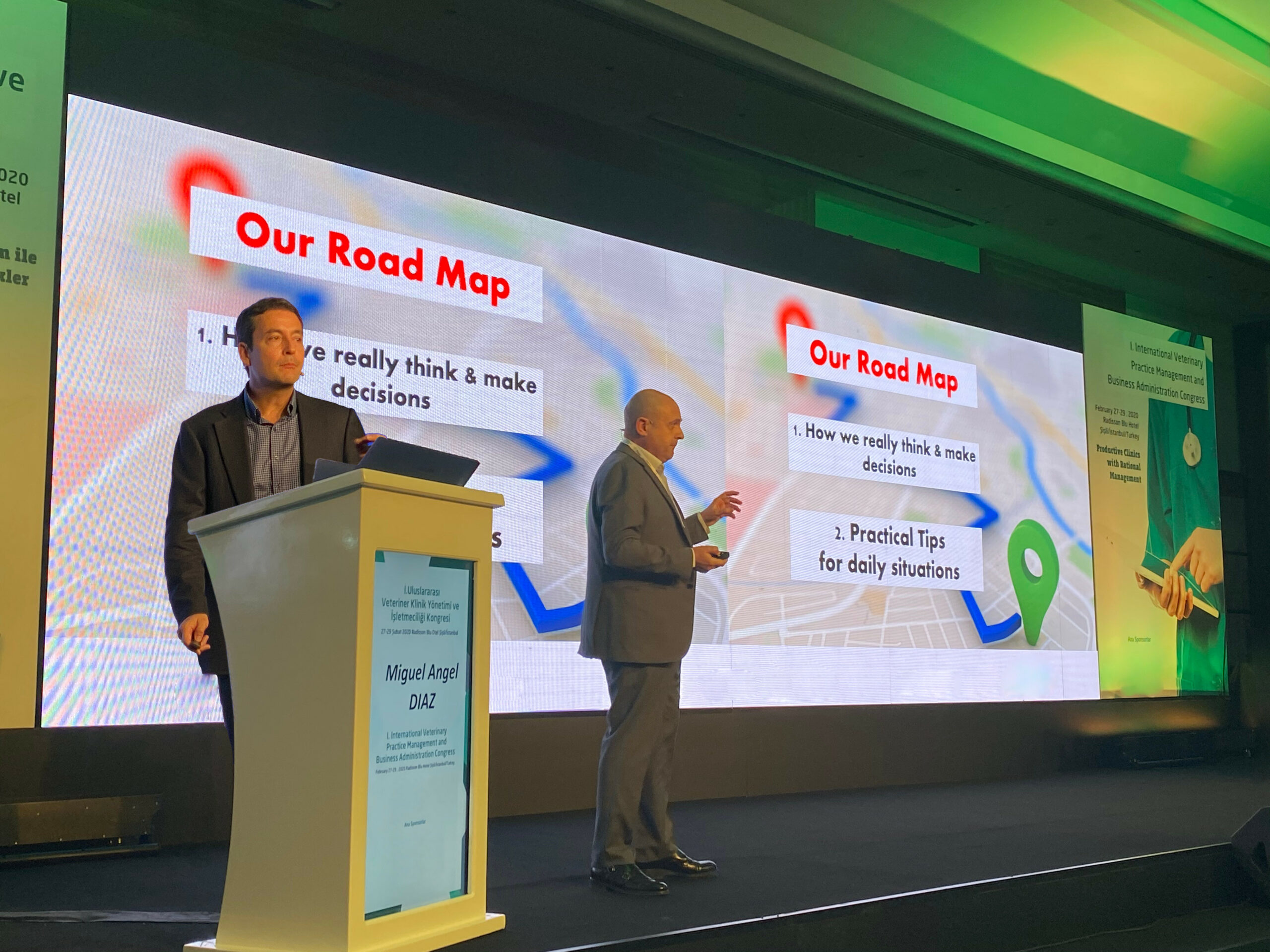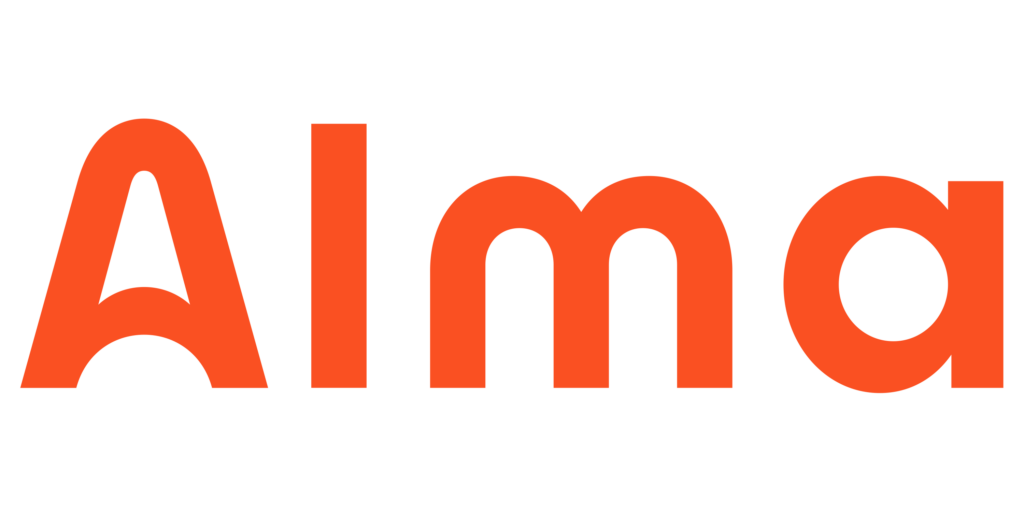Veterinary Practice Management Course (Spanish Ed.)
100% online program with Live Webinars
Would you like to learn how to run your veterinary practice more efficientlybut don't know where to start?
Would you like to become one of those people that everyone would like to have in their clinic because they make everything and everyone work better?
How would you like to have a method and super practical tools to become that person who knows how to get results in your clinic and also create a good working environment?
Would you like to have the feeling that you control your clinic, and not the other way around?
Do you ever see yourself reflected in these thoughts?
- I am thinking about managing my practice and I don't know where to start.
- When it comes to managing the clinic I have some ideas taken from here and there that I don't know how to put into practice with a simple method.
- I don't know how to assess how much I could and should pay to my employees or how much I should be payed as an employee.
- I don't know how to assess whether an investment is going to be profitable or whether it is going to be an absolute disaster.
- I would like to delegate the management of the veterinary center, but I don't have anyone ready or the time to train him.
If the answer to any of these questions is yes, we have very good news for you. The VMA course of direction and management of Veterinary Centers is what you were waiting for.
What makes the VMA Course in veterinary practice management?
It has been created and is taught by two of the world's leading recognized trainers in the world in the field.
On-line format at your own pacecombined with weekly webinars streaming: the best of both worlds.
Practical activities individually corrected every week, 100% exportable to your veterinary center.
Personalized treatment, not massive: limited edition to small groups.
Ideal duration, neither trivial nor exhausting: 10 weeks. Completion rate of +90% in the first two editions.
Learn with the best partners of the course: owners of veterinary centers, practice managers, industry executives.
Cultural and business environment diversity: international student body (more than 10 countries present in the first two editions).
Highest satisfaction and recommended by students of previous editions.

What does the veterinary management program include?
- To or not to become a practice owner, that is the (first) question.
- To specialize or not, that is the (second) question.
- To work for an independent veterinary practice, or for a group practice, that is the (third) question.
- To manage or not to manage, that is the (fourth) question.
The importance of money in professional life.
- SWOT Analysis of Weaknesses, Threats, Strengths and Opportunities.
- The power of trust
- The importance of the Selection Interview
- Keys to success in the first 30 days in the clinic.
- Why it is so necessary to monitor the financial health of the practice.
- What is a KPI (key performance indicator).
- Monitoring the health of the clinic's revenues.
- Tracking the health of the clinic's costs.
- Talking about the clinic's economy with employees: right or wrong?
- How to define the prices of veterinary services: key mistakes to avoid.
- Discounts, a lethal virus for clinic profitability.
- How to calculate how much I can pay to a veterinarian in my practice.
- How to calculate if the sale of a product is profitable (and how profitable) for our practice.
- How to analyze an investment in a new piece of equipment for our clinic.
- CLTV (customer life-time value) and the main customer loyalty metrics.
- Economic impact of good complaint management.
- How to measure customer satisfaction.
- NPS (Net Promoter Score) applied to the veterinary practice.
- Customer orientation: a philosophy with measurable results.
- The importance of communicating well in the practice: surprising facts and misconceptions.
- The Calgary Cambridge Guide: 7 steps to impressing the client in the office.
- How to handle client’s objections in the consultation room
- The most common mistakes in handling client complaints, how to prevent them and how to manage them properly.
- What does the productivity of a veterinarian depend on?
- Financial incentives for veterinarians: a good idea or a recipe for disaster?
- How to give and receive feedback.
- How to organize and behave in work meetings.
- How to demonstrate mission, vision and values by example.
- Story-telling as a leadership tool.
- Visual thinking as a communication tool.
- How to create unforgettable moments with the team.
- The importance of generosity and purpose to be successful professionally and personally.
Who is this course for?
The young veterinarian (recently started in his career or even a student in his last years of university) who wants to complete his training and improve his employability.
The young professional (up to 10 years of professional experience) who wishes to take on management responsibilities, start his or her own practice, make it grow, integrate or develop within a group.
The experienced veterinarian (more than 10 years of experience) who hopes to finally achieve the economic and organizational control of his practice, instead of being controlled by his practice.
To any veterinarian - regardless of age or years of experience - who wants to learn how to properly control his finances and to create a good team and enjoy a healthy, sincere and happy working environment.
Frequently Asked Questions
10 weeks (occasionally, if the course coincides with Christmas or Easter, it can be extended by one week).
A certificate issued by VMA (Veterinary Management Academy) certifying the completion of the program (if passed) or participation in the program.
In the first two editions, 90% of the participants have passed the program successfully. The basic requirement is to deliver a minimum of 80% of the academic activities of the course.
In the 90' live webinar that will take place every week, and in writing via email during the rest of the course.
It depends quite a bit on the student and her desire to delve deeper into the materials, but on average we estimate about 4-5 hours of work per week.
Yes, in fact, in the first editions of the program we have had engineers, lawyers, economists, veterinary assistants, psychologists... The only thing is that all the students have in common is their professional interest in the field of veterinary practice management.
Click here to see our return policy.
You will be able to download some pdf's, some templates, all the exercises, even some chapters of books from both teachers. But NOT the course itself, as it is designed in an interactive web format that includes many videos, interactive graphics, etc. But you will be able to access all these contents during the 10 weeks of the course and 3 additional months after its completion.
3 months.
It will cost you a little more but with a minimum of effort and interest you will learn quickly, from the most basic to the most complex. All economic contents are explained in a very applied way, with examples in the context of a clinic, and avoiding technicalities or purely academic approaches.
Of course, in the course there is a very important load of content specifically designed to help you communicate successfully with clients, with your colleagues, your subordinates or your bosses if you have them.
1.995,00€

Con Alma Pay puedes pagar en 4 plazos
¡sin intereses!
- 10-week course.
- On-line training at your own pace.
- Certificate at the end of the course.
- Available in Spanish and English
- 8 webinars.
- 8 Modules and 37 lessons
- Exercises, resources and materials available